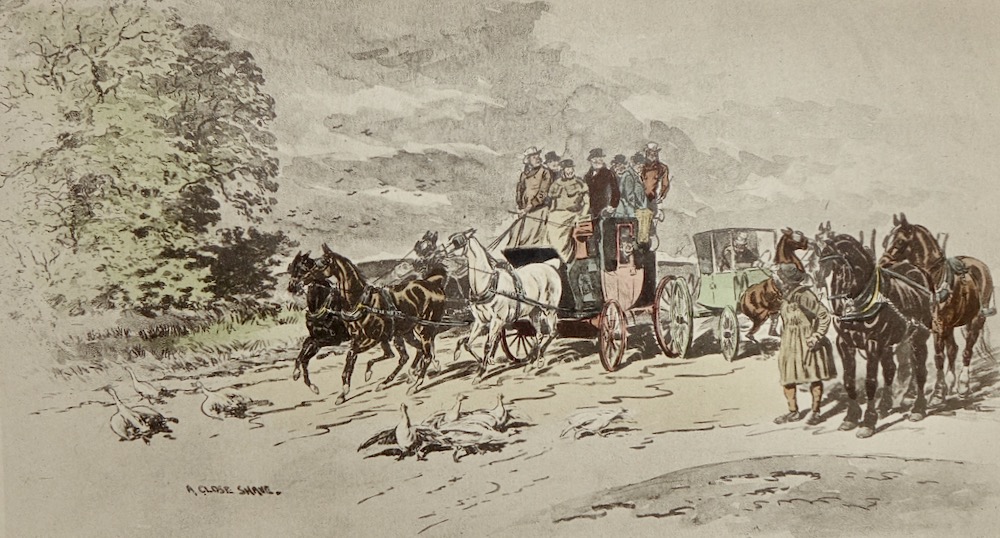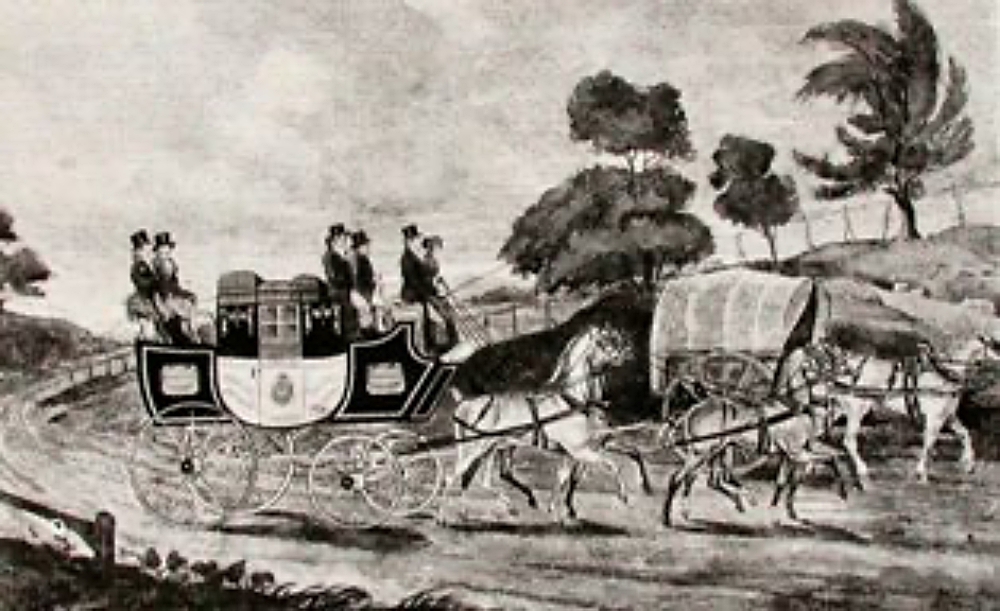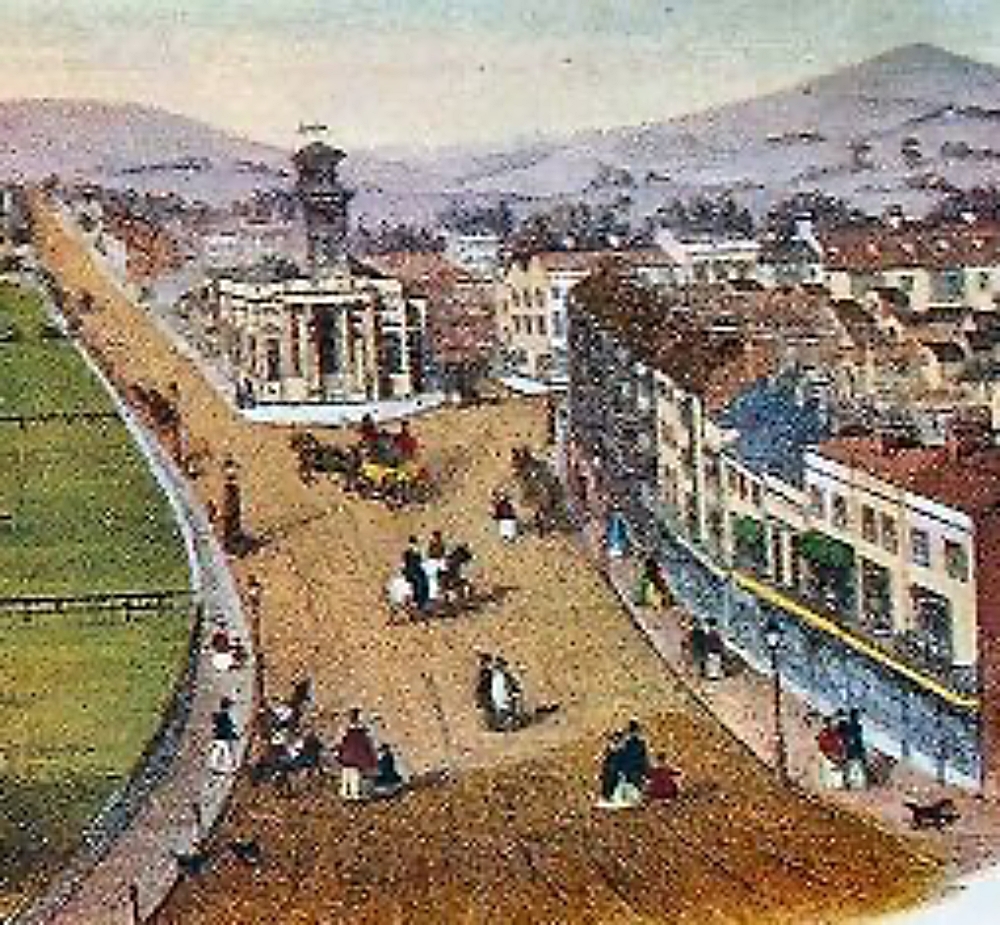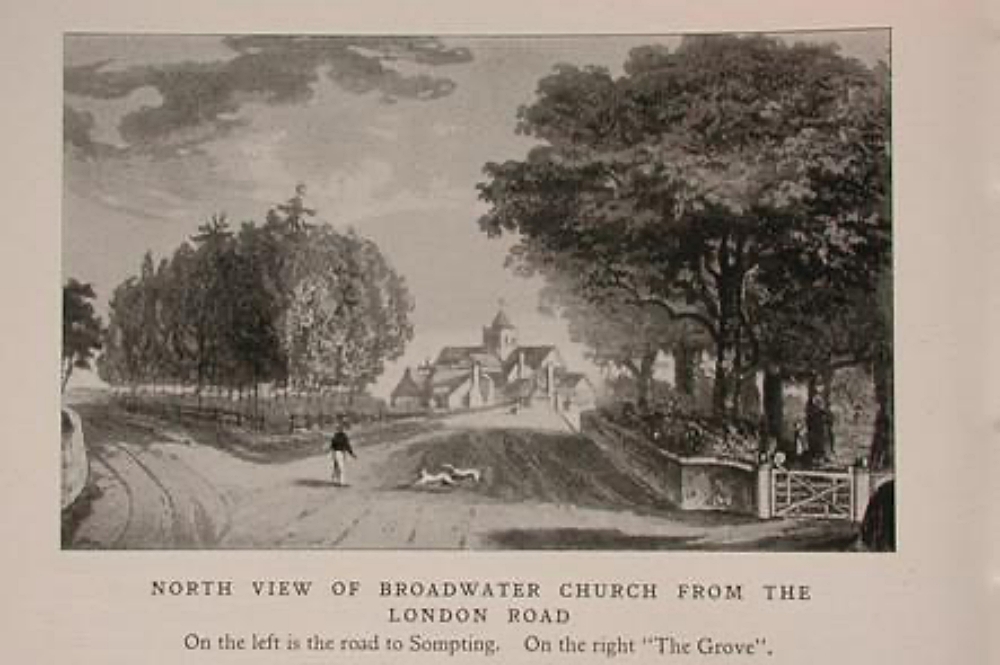Worthing to London by stagecoach

IT is difficult to believe that more than 200 years before the costly railway service that serves us today, the travelling public was conveyed between the south coast and the rest of Britain by a surprisingly reliable network of horse-drawn coaches running to and from every town in the kingdom.
By the mid-1800s, there was an especially reliable coach service between Worthing and London, one running in each direction during the winter months, with three extra coaches a day in the summer.

While comfort fell considerably short of that offered by today’s trains, their timekeeping, in contrast, was legendary.
With the help of contemporary notes left by James Town, whose local stables provided many of the horses that “powered” local coaches during the 1800s, Freddie Feest retraces the fascinating, winding and sometimes tortuous route that early Victorian coaching passengers experienced in their travels between Worthing and London.
James Town drove the yellow coach, named the Accommodation. Its journey began at No 46 South Street, Worthing – in recent years occupied by Pressleys the jewellers – while its friendly competitor, the blue Sovereign, set off from an office on a site that is now part of Debenhams.

According to James Town, two better-conducted coaches could not be found anywhere on the coaching network. They set a pace for the journey from Worthing to London that required no fewer than five changes of horses in each direction.
First stage covered nine miles to Ashington, followed by 10½ miles to the King’s Head at Horsham, then nine miles to Bear Green, where the horses were changed at Brakesfield Farm. This was followed by a further nine-mile stint to the Duke’s Head Inn at Leatherhead – for a 20-minute lunch stop – then a hectic 11-mile stage to the final change of horses at the King’s Head, near the double toll gates at Merton and Morden.
The slowest leg of the journey was, understandably, the final one in London itself – seven-and-a-half miles from Merton to Westminster Bridge.
James Town described the Accommodation and Sovereign coaches as “well appointed and driven by such careful and experienced coachmen that you always knew exactly when you would arrive.
“The coaches were only ever late at Christmas-time,” he recalled, “when parcels hung all over the coach and the ground was thickly covered with snow. Then, perhaps, they were a little behind time.
“As for accidents, why, they were almost unknown. The stage coachmen of those days were men of intelligence and they knew as much as two persons, and sometimes as much as three.”
It was considered a real treat to be fortunate enough to get the box seat up next to the driver on the journey from Worthing to London and to be told stories of the places of interest passed on the road and the people who lived in the great houses. The knowledge of the coach drivers was truly impressive.
According to James Town, they even knew how many trees there were on the left and right sides of the road from Worthing to London!
When setting out from Worthing, if a stranger was on the box, the coachman would point out to him, while passing Broadwater Green, Charman Dean, the beautiful residence of Mrs Thwaytes, widow of a successful London tea merchant.

Then Offington, where Squire Daubuz lived, followed by Findon Place, occupied by Squire Richardson, master of the Findon foxhounds. Next came Muntham Court, home of Mr Frankland, and Highden, Sir Harry Dent Goring’s house.
By this time, the coach was going down Washington Bostal and the passing scene was the village and church of Washington.
Going down the hill, the driver would gesture over his right shoulder towards Chanctonbury Ring, “one of the highest points in Sussex”. A few minutes later, they would arrive in Ashington, “the prettiest village in Sussex”, and change horses for the first time.
Horses were invariably all ready and off they’d go.
Next to Dial Post, “a small village”.
“Now we are going down Bay Bridge Hill. The ruins before you are those of the old Knepp Castle. A little further on, the first place on the left is the new Knepp Castle, the residence of Sir Charles Merrik Burrell, member of Parliament for the borough of New Shoreham. On the right is West Grinstead Park.”
“Our next village is Southwater, a noted place for geese. Now we come to Denne Park, with its fine avenue of lime trees, then we are going down Pict’s Hill.”
“Then it’s the old town of Horsham and we change horse at the King’s Head.”
“Leaving Horsham on the left is Springfield House and, beyond it, Field Place, Sir Timothy Shelley’s residence, while over there is Warnham Court, Mr Tredcroft’s pretty place. ”
“Then, on the left, we can see Lyne, the home of Mr Broadwood, the noted pianoforte maker, and soon we shall pass through the old village of Capel and over Bear Green.”

The coachman, a combination of gazetteer and aristocratic journal, would continue sharing his catalogue of knowledge, gathered over many years on the road.
“At Bear Green, we make our third change of horses at Brakesfield Farm, then it’s over Holmwood Common to Dorking and the Bull’s Head, the booking office kept by Mr Broad, proprietor of the Dorking coach.”
“Leaving Dorking, we pass Deepdene, Mr Thomas Hope’s mansion, on the left, and on the right is Denbies, a beautiful mansion belonging to Mr Dennison.”
“Box Hill stands out in bold relief in front of us and, as we cross the River Mole, the old hotel at the foot of Box Hill is the Fox and Hounds and the road along this valley is very pretty. Through Mickleham; a very nasty corner here.”
“Passing the village, on the right is a training ground for race horses and many a Derby winner has taken his last gallop there before winning the great race…”
“As the coach trundled through Leatherhead, changing horses at the Duke’s Head, the driver always pointed out an old inn, The Leg of Mutton and Cauliflower.
On rising Epsom Common, the coachman would draw attention to Durdans, close to the race course, the home of Sir Gilbert Heathcote, who won the Derby in 1838 with Amato.
After leaving Epsom, the coach stopped at Spring Hotel, in Ewell, for parcels or passengers, before passing through the double toll gates at Merton and Morden. That left just the final horse change at the King’s Head before pulling up Balham Hill, over Clapham Common and through Kennington Gate to the Elephant and Castle.
Finally, on to the Golden Cross, Charing Cross and to the White Horse, in Fetter Lane.
As James Town wrote in late 1800s, “the stagecoach journey from Worthing to London was full of interest all the way and something to remember all your life”.